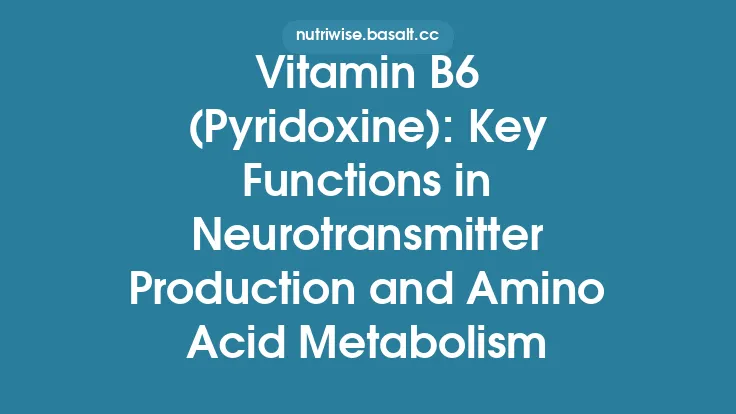The human gastrointestinal tract is home to a dense and dynamic community of microorganisms, collectively known as the gut microbiota. While the sheer number of bacterial cells—estimated at 10¹⁴—has long fascinated scientists, it is the functional repertoire of these microbes that underpins many aspects of host physiology. Gut bacteria act as a metabolic extension of the human body, performing biochemical transformations that our own cells cannot accomplish. Understanding these key functions provides a foundation for appreciating how the microbiome contributes to health and disease, independent of dietary interventions, probiotic supplementation, or immune‑focused discussions.
Metabolic Processing of Dietary Components
Gut bacteria possess an enzymatic toolbox that complements human digestive enzymes. Complex carbohydrates, such as resistant starches, non‑starch polysaccharides, and oligosaccharides, escape digestion in the upper gastrointestinal tract and reach the colon largely intact. Here, bacterial glycoside hydrolases, polysaccharide lyases, and carbohydrate esterases cleave these polymers into monosaccharides and oligosaccharides that can be fermented.
Beyond carbohydrates, the microbiota also participates in the breakdown of proteins and peptides. Bacterial proteases and peptidases generate amino acids and bioactive peptides, some of which influence host signaling pathways. Moreover, certain gut microbes can deconjugate and dehydroxylate dietary polyphenols, converting them into metabolites with enhanced bioavailability and biological activity.
These metabolic activities expand the host’s nutrient pool, allowing extraction of energy and bioactive compounds from otherwise indigestible food components.
Production of Short‑Chain Fatty Acids and Their Systemic Effects
Fermentation of carbohydrates by anaerobic gut bacteria yields short‑chain fatty acids (SCFAs)—primarily acetate, propionate, and butyrate—in a roughly 60:20:20 ratio. Each SCFA exerts distinct physiological effects:
- Acetate serves as a substrate for peripheral tissues, contributing to cholesterol synthesis and acting as a signaling molecule through G‑protein‑coupled receptors (GPR41/FFAR3, GPR43/FFAR2).
- Propionate is largely taken up by the liver, where it participates in gluconeogenesis and modulates lipid metabolism.
- Butyrate is the preferred energy source for colonocytes, promoting epithelial cell proliferation, differentiation, and apoptosis regulation. It also functions as a histone deacetylase (HDAC) inhibitor, influencing gene expression in the gut epithelium.
Collectively, SCFAs regulate energy homeostasis, appetite signaling, and metabolic health, acting locally in the colon and systemically after entering the circulation.
Synthesis of Essential Vitamins and Cofactors
Several gut bacterial taxa are capable of de novo synthesis of water‑soluble vitamins that the host cannot produce. Notable examples include:
| Vitamin | Primary Bacterial Producers | Relevance to Host |
|---|---|---|
| Vitamin K₂ (menaquinone) | *Bacteroides, Eubacterium* spp. | Essential for blood clotting and bone metabolism |
| Biotin (B7) | *Lactobacillus, Bifidobacterium* spp. | Cofactor for carboxylation reactions in fatty acid synthesis |
| Folate (B9) | *Bacteroides spp., Fusobacterium* spp. | Critical for nucleotide biosynthesis and methylation cycles |
| Riboflavin (B2) | *Lactobacillus spp., Enterococcus* spp. | Precursor for flavin adenine dinucleotide (FAD) and flavin mononucleotide (FMN) |
| Cobalamin (B12) | *Propionibacterium spp., Akkermansia muciniphila* (limited) | Required for DNA synthesis and red blood cell formation |
While dietary intake remains the primary source of most vitamins, microbial contributions can be significant, especially under conditions of limited dietary supply or malabsorption.
Bile Acid Transformation and Lipid Metabolism
Primary bile acids are synthesized in the liver from cholesterol and secreted into the intestine to emulsify dietary fats. Gut bacteria modify these molecules through several reactions:
- Deconjugation – Bile salt hydrolases (BSHs) remove glycine or taurine conjugates, generating free bile acids.
- 7α‑Dehydroxylation – Certain *Clostridium and Eubacterium* species convert primary bile acids (cholic acid, chenodeoxycholic acid) into secondary bile acids (deoxycholic acid, lithocholic acid).
- Epimerization and Oxidation – Additional modifications alter bile acid signaling properties.
These transformed bile acids act as ligands for nuclear receptors (FXR, PXR) and membrane receptors (TGR5), influencing lipid absorption, glucose metabolism, and energy expenditure. Dysregulation of bile acid metabolism has been linked to metabolic syndrome and non‑alcoholic fatty liver disease, underscoring the functional importance of microbial bile acid processing.
Maintenance of the Intestinal Barrier and Mucosal Health
The gut epithelium forms a selective barrier that separates luminal contents from underlying tissue. Gut bacteria contribute to barrier integrity through several mechanisms:
- Mucin Utilization and Stimulation – Mucin‑degrading bacteria (e.g., *Akkermansia muciniphila*) recycle mucin glycans, promoting a dynamic mucus layer that adapts to microbial pressure.
- Production of Tight‑Junction Modulators – Certain SCFAs, especially butyrate, up‑regulate expression of tight‑junction proteins (claudin‑1, occludin) via activation of AMP‑activated protein kinase (AMPK) pathways.
- Generation of Antimicrobial Peptides – Commensal bacteria can induce host epithelial cells to secrete defensins, reinforcing the chemical barrier.
These interactions preserve epithelial homeostasis, limit translocation of luminal antigens, and support overall gut health.
Modulation of the Gut‑Brain Axis
Beyond local gut functions, bacterial metabolites influence central nervous system (CSN) activity—a concept known as the gut‑brain axis. Key microbial mediators include:
- SCFAs – Cross the blood‑brain barrier (BBB) and modulate neuroinflammation, neurogenesis, and neurotransmitter synthesis.
- Tryptophan Metabolites – Gut bacteria convert dietary tryptophan into indoles, kynurenine, and serotonin precursors, affecting mood and cognition.
- Gamma‑Aminobutyric Acid (GABA) and Other Neurotransmitters – Certain *Lactobacillus and Bifidobacterium* strains produce GABA, dopamine, and acetylcholine, which can act on vagal afferents or enter systemic circulation.
Through these pathways, the microbiota can impact stress responses, behavioral patterns, and neurodegenerative processes, independent of immune modulation.
Detoxification and Xenobiotic Metabolism
The gut microbiome functions as a first line of chemical defense, metabolizing xenobiotics—including drugs, environmental toxins, and dietary contaminants—before they reach systemic circulation. Representative reactions include:
- Reductive Metabolism – Bacterial azoreductases cleave azo bonds in certain dyes and drugs, altering their activity.
- Hydrolysis of Ester and Amide Bonds – Esterases and amidases convert prodrugs into active forms or deactivate toxic compounds.
- Dehydroxylation and Decarboxylation – Transform phenolic compounds, influencing their absorption and excretion.
These microbial transformations can affect drug efficacy, toxicity, and inter‑individual variability in pharmacokinetics, highlighting the microbiome’s role in personalized medicine.
Influence on Host Energy Homeostasis and Metabolic Disorders
By integrating the functions described above, gut bacteria exert a profound impact on whole‑body energy balance. SCFAs provide up to 10 % of daily caloric intake in Western diets, while bile acid signaling modulates hepatic glucose production and lipid synthesis. Moreover, microbial metabolites can affect adipocyte differentiation and insulin sensitivity through:
- Activation of G‑protein‑coupled receptors (GPR41/43) – Influencing sympathetic nervous system activity and energy expenditure.
- Modulation of hepatic fibroblast growth factor 19 (FGF19) pathways – Regulating bile acid synthesis and glucose metabolism.
- Epigenetic Regulation – SCFA‑mediated HDAC inhibition alters expression of genes involved in lipid storage and inflammation.
Collectively, these mechanisms link dysbiosis to obesity, type 2 diabetes, and metabolic syndrome, even when dietary patterns are held constant.
Interactions with Host Gene Expression and Epigenetics
Microbial metabolites serve as signaling molecules that can directly modify host epigenetic landscapes. For instance:
- Butyrate as an HDAC Inhibitor – Increases histone acetylation, promoting transcription of genes involved in barrier function and anti‑inflammatory pathways.
- Propionate and Acetate as Substrates for Histone Acetyltransferases (HATs) – Contribute acetyl groups for chromatin remodeling.
- Microbial‑Derived S‑adenosyl‑methionine (SAM) Precursors – Influence DNA methylation patterns.
These epigenetic effects can have lasting consequences on cellular phenotype, potentially affecting disease susceptibility across the lifespan.
Future Directions and Research Frontiers
While the functional contributions of gut bacteria are increasingly mapped, several knowledge gaps remain:
- Strain‑Specific Functional Profiling – Moving beyond genus‑level descriptions to identify which bacterial strains execute key metabolic pathways.
- Integration with Host Metabolomics – Coupling metagenomic data with comprehensive metabolite profiling to delineate causal relationships.
- Temporal Dynamics – Understanding how functional outputs fluctuate diurnally, with meals, and across life stages.
- Therapeutic Modulation – Designing targeted interventions (e.g., engineered microbial consortia, small‑molecule modulators) that enhance beneficial functions without broad‑spectrum disruption.
- Cross‑Kingdom Interactions – Elucidating how fungi, archaea, and viruses within the gut ecosystem influence bacterial functional capacity.
Advances in multi‑omics, machine learning, and synthetic biology promise to translate these insights into precision strategies for maintaining and restoring optimal gut microbial function.
In sum, gut bacteria are indispensable biochemical partners that extend human metabolic capabilities, synthesize essential nutrients, shape signaling pathways, and safeguard intestinal integrity. Their diverse functional repertoire underscores the importance of preserving a balanced microbial ecosystem—not merely for digestion, but for systemic health across the lifespan.





